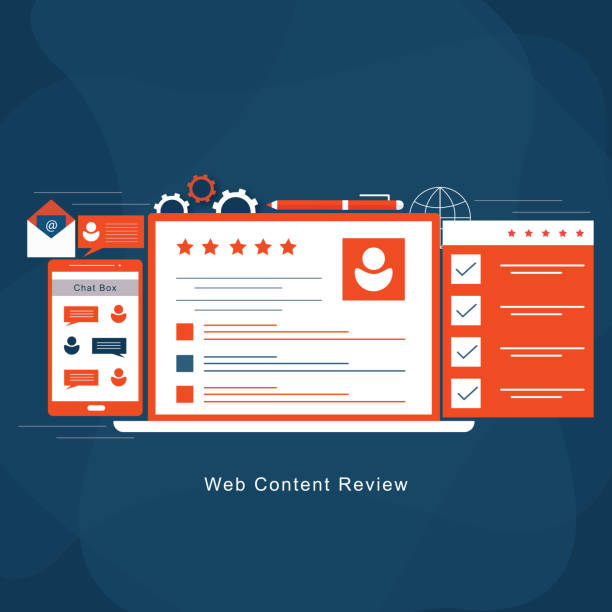The Importance of Fast Website Design in Today’s World
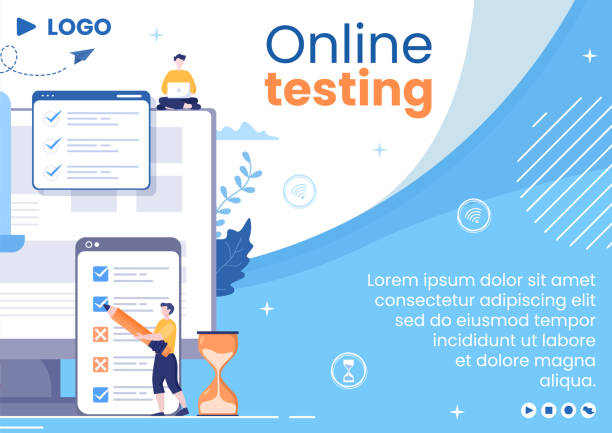
In the current digital age, where users highly value speed and efficiency, the concept of #fast_website_design has become more crucial than ever.
It is no longer possible to expect success with a website that loads slowly.
Slow site speed not only harms #user_experience but can also lead to the loss of potential customers and reduced revenue.
According to research, a significant portion of users abandon a page if it takes more than a few seconds to load.
This directly affects the Bounce Rate and sends a negative signal to search engines.
In today’s competitive world, where hundreds or thousands of websites operate in the same field, speed can be a crucial competitive advantage.
Assume you and your competitor both offer similar products at the same prices, but your website loads in less than two seconds while your competitor’s website takes four seconds.
Which one has a better chance of attracting and retaining users? Certainly, your website.
For this reason, investing in fast website design and continuous speed optimization is a necessity for any business that wants to succeed in the online space.
This not only helps improve search engine rankings but also directly impacts converting users into customers and increasing their satisfaction.
A high-performance website also boosts your credibility and demonstrates your professionalism.
Does your current site reflect your brand’s credibility as it should? Or does it drive away potential customers?
Rasaweb, with years of experience in professional corporate website design, is your comprehensive solution.
✅ A modern, beautiful website tailored to your brand identity
✅ Significant increase in lead and new customer acquisition
⚡ Contact Rasaweb now for a free corporate website design consultation!
Key Factors Affecting Website Speed

To achieve fast website design, understanding the key factors affecting loading speed is essential. These factors can vary from technical server aspects to coding details and visual content of the website.
One of the most important factors is Server Response Time.
If your server is slow, regardless of how optimized the coding is, the website will load with a delay.
Optimizing images and media also plays a key role; large image files can severely reduce loading speed.
Using modern formats like WebP and proper image compression is essential.
Another factor is CSS and JavaScript code.
If these files are not properly minified or are not loaded non-blockingly, they can prevent the page from rendering quickly.
Using a CDN (Content Delivery Network) to deliver content from the closest server to the user helps reduce latency and significantly increase speed.
Also, enabling caching in the browser and on the server side ensures that static website information loads faster for subsequent visits.
Database optimization, cleaning up extra code, and using efficient data structures also contribute to creating a fast website.
All these factors combined lead to a fast and optimized website design that provides an excellent user experience.
Tools and Techniques for Measuring Website Speed
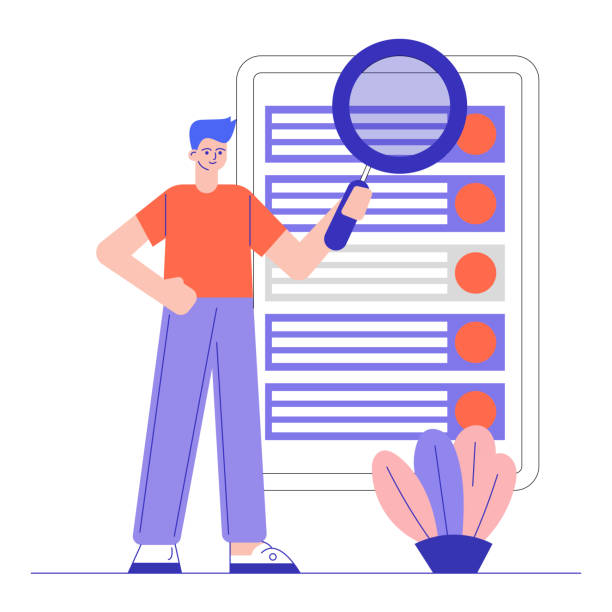
To ensure that your efforts in fast website design are fruitful, you must be able to accurately measure your website’s speed.
Numerous tools are available for this purpose, each providing valuable information.
Google PageSpeed Insights is one of the most widely used tools, providing a score for your website’s speed on both desktop and mobile and offering suggestions for improvement.
This tool also checks Google’s Core Web Vitals metrics such as LCP (Largest Contentful Paint), FID (First Input Delay), and CLS (Cumulative Layout Shift).
Other tools like GTmetrix and Pingdom Tools also help you analyze your website’s performance from various aspects, including full page load time, number of HTTP requests, and page size.
These tools often show a Waterfall chart of resource loading, which helps you identify speed bottlenecks.
Correct interpretation of these tools’ results is crucial for continuous website speed improvement. One should not merely settle for the score but pay attention to the details of the suggestions and charts provided to find and fix the root cause of slow speed.
Regular measurement and implementation of improvements are an integral part of the fast website design process.
Below is a table of common metrics and their explanations:
| Metric | Description | Importance |
|---|---|---|
| LCP (Largest Contentful Paint) | Time it takes for the largest content element visible to the user to render | Indicates the perceived loading time of the main page |
| FID (First Input Delay) | The delay between the user’s first interaction and the browser’s response | The website’s responsiveness to initial user interactions |
| CLS (Cumulative Layout Shift) | The extent of unexpected visual element shifts during loading | Indicates the visual stability of the page |
| TTFB (Time To First Byte) | Time to receive the first byte of data from the server | Reflects server response speed |
| Fully Loaded Time | The total time to load all page resources | The overall time required to fully prepare the page |
Optimizing Images and Media to Increase Speed
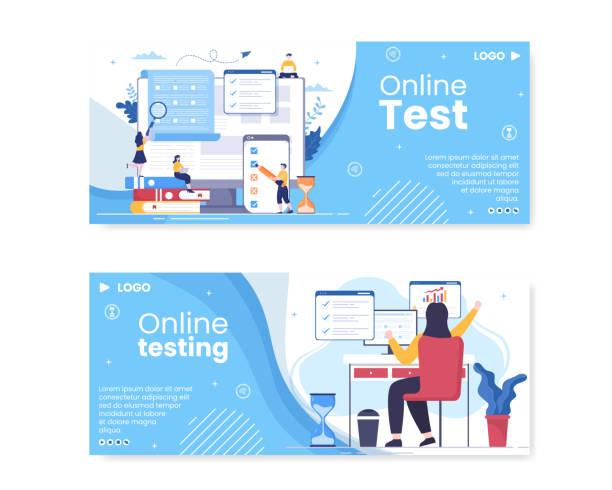
One of the biggest obstacles to fast website design is unoptimized images and media files.
High-quality images, if not properly compressed and adjusted, can take up a large amount of data and severely increase page loading time.
The first step in optimizing images is choosing the right format.
Formats like WebP are very suitable due to higher compression while maintaining acceptable quality.
Also, using SVG for vector graphics can minimize file size.
In addition to format, image dimensions are also important.
There’s no need to load an image with dimensions of 4000×3000 pixels in a space that only requires 600×400 pixels.
Using Responsive Images with the srcset attribute in HTML allows the browser to select the best image size based on the user’s screen size.
The Lazy Loading technique is also very effective for images and videos; this technique ensures that images and videos not currently in the user’s viewport (i.e., not visible on the screen) are not loaded until the user scrolls to them.
This significantly increases the initial page load speed and is an important step in fast and optimized website design.
Using online image compression tools or specific plugins in Content Management Systems (CMS) like WordPress can also automatically optimize your images.
For videos, in addition to compression, using video hosting services like YouTube or Vimeo instead of hosting them directly on your server can greatly help conserve bandwidth and increase speed.
Adhering to these points is an inseparable part of any successful fast website design approach.
Do you know that customers’ first impression of your company is your website? Multiply your business’s credibility with a powerful corporate website from Rasaweb!
✅ Custom and eye-catching design tailored to your brand
✅ Improved user experience and increased customer acquisition
⚡ Get a free consultation now!
The Role of Web Hosting in Fast Website Design
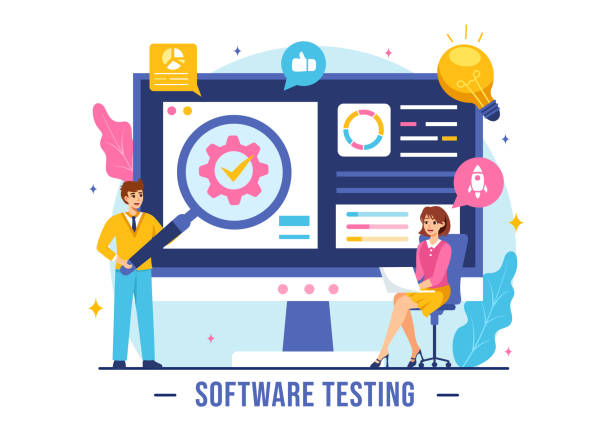
Choosing the right hosting is the cornerstone of any fast website design.
The quality and configuration of your web hosting server directly impact server response time (TTFB) and ultimately the overall website loading speed.
Even if you have the best coding and image optimization, unsuitable hosting can negate all your efforts.
There are different types of hosting, each with its own advantages and disadvantages in terms of speed:
- Shared Hosting: The cheapest option, but server resources are shared with other websites, which can lead to reduced speed during peak hours.
- Virtual Private Server (VPS): Offers more dedicated resources and performs better than shared hosting.
This option is suitable for websites with moderate traffic. - Dedicated Server: All server resources are allocated solely to your website, providing the highest performance and speed, but at a high cost.
- Cloud Hosting: Resources are provided from multiple distributed servers, offering high flexibility and stability, and can significantly increase website speed.
In addition to the type of hosting, other factors such as using SSD drives instead of HDDs, support for HTTP/2, and the geographical location of the server (proximity to target users) also affect speed. A server with high responsiveness and minimal latency is the first step towards having a fast website design.
Always check user reviews before choosing and ensure that the web hosting company has the necessary infrastructure to support high speed.
Optimized Coding and Content Structure for High Speed

In addition to external factors like hosting and images, your website’s own coding and content structure also play a vital role in fast website design.
Clean, compressed, and optimized code puts less burden on the browser and server, thereby increasing loading speed.
One of the key principles is reducing HTTP requests.
Every CSS, JavaScript, or image file loaded on your page creates a separate HTTP request.
By combining and compressing these files (Minification and Concatenation), the number of requests can be significantly reduced.
It is important to load JavaScript files asynchronously or defer to prevent them from blocking the rendering of the main page content.
Placing scripts at the end of the <body> tag is also a common method to ensure visual content loads before JavaScript code.
Optimized inline or external CSS usage and avoiding excessive CSS also help improve speed.
Regarding content structure, Responsive Design, optimized for various devices, is crucial for mobile speed.
Also, using lightweight and efficient frameworks and avoiding unnecessary and heavy plugins and add-ons in CMSs helps maintain site lightness and speed.
An optimized database and efficient queries are also very important for dynamic websites.
All these elements together form a fast and high-performance website that provides a pleasant user experience.
The ultimate goal of fast website design is to deliver content to the user in the shortest possible time.
Caching and CDN: Golden Solutions for High-Traffic Websites

For high-traffic websites, optimized coding and powerful hosting alone are not enough; Caching and CDN (Content Delivery Network) are two golden solutions that significantly contribute to fast website design and improved user experience.
Caching means temporarily storing a version of website content closer to the user (such as in their browser or an intermediate server).
This ensures that on subsequent visits, there is no need to fully load content from the main server, and the page displays much faster.
There are different types of caching:
- Browser Caching: Static files like CSS, JavaScript, and images are stored in the user’s browser.
- Server-Side Caching: Includes database caching, object caching with tools like Redis or Memcached, and full-page caching.
These methods reduce server load and increase response speed.
CDN is also a network of distributed servers in various geographical locations.
When a user visits your website, the CDN delivers the static website content from the closest server to them.
This significantly reduces latency (network delay) and improves loading speed for users worldwide.
Using a CDN is especially essential for global, high-traffic websites with many visitors from different regions and is a key component in a fast website design strategy.
This combination of caching and CDN ensures that your website maintains excellent performance and high speed even under heavy traffic loads.
| Technique | Storage Location | Advantages | Disadvantages |
|---|---|---|---|
| Browser Caching | User’s browser | Reduces requests to the server, fast loading for repeat visits | Effective only for repeat user visits |
| Server Caching (Database/Object) | Server memory | Reduces database load, increases server-side processing speed | Requires precise configuration and server resources |
| Server Caching (Full Page) | Server disk or memory | Delivers pre-built HTML pages, significantly reduces response time | May have challenges with dynamic content |
| CDN (Content Delivery Network) | Network of globally distributed servers | Reduces Latency for remote users, lessens load on the main server, increases security | Higher cost, requires initial configuration |
The Impact of Fast Website Design on SEO and Google Ranking
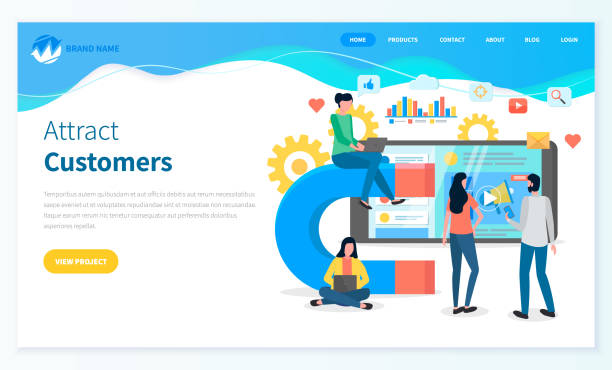
In recent years, Google has increasingly emphasized website speed as an SEO ranking factor.
Fast website design not only improves user experience but also directly impacts your website’s discoverability in search results.
Google, especially with the introduction of Core Web Vitals metrics in 2021, officially announced that page speed and visual stability are important factors in their ranking algorithm.
Slower websites have higher bounce rates and retain fewer users.
This signals to search engines that your website does not offer a desirable user experience, which can lead to a lower ranking.
Conversely, a faster website can increase conversion rates because users can access their desired content or products without delay.
This higher conversion rate is a positive indicator for search engines.
Furthermore, site speed also affects search engine crawling.
If your website is slow, Google bots spend more time crawling your pages and may not be able to properly index all of them.
A high-performance website facilitates indexing and ensures your content appears quickly in search results. Ultimately, investing in fast website design is an investment in your SEO and the long-term success of your online business.
Ignoring speed means ignoring a significant part of your digital marketing strategy.
Does your current website convert visitors into customers or drive them away? Solve this problem forever with professional corporate website design by Rasaweb!
✅ Building credibility and powerful branding
✅ Attracting target customers and increasing sales
⚡ Get a free consultation now!
Challenges and Misconceptions in Website Speed Optimization

On the path to fast website design, many developers and website owners encounter challenges and misconceptions that can make the optimization process difficult or even ineffective.
One of the most common misconceptions is that “adding more plugins and features always slows down the site.”
While low-quality or excessive plugins can reduce speed, many reputable and optimized plugins are powerful tools for enhancing functionality and even site speed (such as caching plugins).
The issue is quality and necessity, not merely quantity.
Another challenge is excessive obsession with speed test tool scores.
While high scores are desirable, sometimes striving for a 100 score in tools like PageSpeed Insights can lead to extreme and sometimes unnecessary optimizations that have little impact on actual user experience.
The priority should be on actual user experience and Core Web Vitals, not just the raw score.
Another misconception is that “speed only depends on hosting.”
As discussed earlier, hosting is an important part, but it’s not the only factor.
Code, image optimization, caching, and CDN all play vital roles.
Also, some people think fast website design is just a one-time task.
In fact, speed optimization is an ongoing process that needs to be regularly reviewed and updated as the website grows and technologies change.
Ignoring these challenges and misconceptions can lead to wasted time and resources and ultimately to a slow and inefficient website.
The Future of Fast Website Design and New Trends

The world wide web is constantly evolving, and with it, the concept of fast website design also undergoes changes.
New trends are emerging, aiming to provide the fastest and best possible user experience.
One of the most important of these trends is Progressive Web Apps (PWAs).
PWAs combine the best features of websites and mobile applications, offering a native app-like user experience, offline capabilities, and faster loading.
They use Service Workers to cache content and perform well even in poor network conditions.
Accelerated Mobile Pages (AMP) is another Google project designed for instant content loading on mobile, especially for news articles.
Although AMP has been controversial, it remains a solution for high speed on mobile devices.
Headless CMS architectures are also gaining popularity.
In this approach, the backend (CMS) is separated from the frontend (user interface), allowing developers to build astonishingly fast websites using modern and lightweight frameworks.
Serverless computing and using cloud functions to execute code without needing to manage dedicated servers also help increase scalability and reduce response time.
Furthermore, with more advancements in HTTP/3 and other network protocols, data transfer speeds on the web are expected to increase even further.
The future of fast website design is towards websites that not only load quickly but also intelligently adapt to network conditions and the user’s device, providing an exceptional user experience.
These developments show that website speed optimization is a dynamic and ever-growing field.
Frequently Asked Questions
| Question | Answer |
|---|---|
| What is fast website design? | It refers to the process of building a website with high loading speed, optimized for excellent performance. |
| Why is site speed important? | Site speed directly impacts user experience, conversion rates, SEO, and search engine rankings. |
| What are the factors affecting site speed? | Image size, optimized coding, CDN usage, caching, choosing suitable hosting, and the number of plugins. |
| How can website loading speed be increased? | Optimizing images, compressing files (CSS, JS, HTML), using browser caching, reducing redirects, and utilizing a CDN. |
| What is CDN and how does it help site speed? | A Content Delivery Network that stores your website’s content on various geographical servers and delivers it from the closest server to the user. |
| What is the role of hosting in site speed? | The quality and type of hosting (shared, VPS, dedicated) greatly influence server response time and, consequently, website loading speed. |
| Does using too many plugins reduce site speed? | Yes, each plugin loads additional code that can lead to site slowdowns. Choosing optimized and essential plugins is recommended. |
| How to optimize images to increase site speed? | Compressing images without losing quality, using modern formats (WebP), setting correct dimensions, and lazy loading. |
| How does Caching help site speed? | Caching helps temporarily store website content in the user’s browser or on the server, so the site loads faster on subsequent visits. |
| What are the best tools for checking site speed? | Google PageSpeed Insights, GTmetrix, and Pingdom Tools are among the common and useful tools for analyzing and improving site speed. |
And other advertising agency services by Rasaweb in advertising
Smart Link Building: A creative platform to improve customer behavior analysis with precise audience targeting.
Smart Brand Identity: Designed for businesses seeking to increase sales through attractive user interface design.
Smart Marketplace: A professional solution for campaign management with a focus on precise audience targeting.
Smart Link Building: Professional optimization for online growth using Google Ads management.
Smart SEO: A creative platform for improving online growth with intelligent data analysis.
And over a hundred other services in the field of internet advertising, advertising consultation, and organizational solutions
Internet Advertising | Advertising Strategy | Sponsored Articles
Resources
10 Tips for Increasing Website Speed
The Importance of Fast Website Design
Solutions for Improving Website Performance
WordPress Speed Optimization: A Complete Guide
? Are you looking for significant growth for your business in the online space? Rasaweb Afarin, with unparalleled expertise in digital marketing, from fast and optimized website design to comprehensive SEO strategies and content production, is your complete solution for visibility and attracting more customers.
📍 Tehran, Mirdamad Street, next to Bank Markazi, Kazeroon Jonubi Alley, Ramin Alley, No. 6

